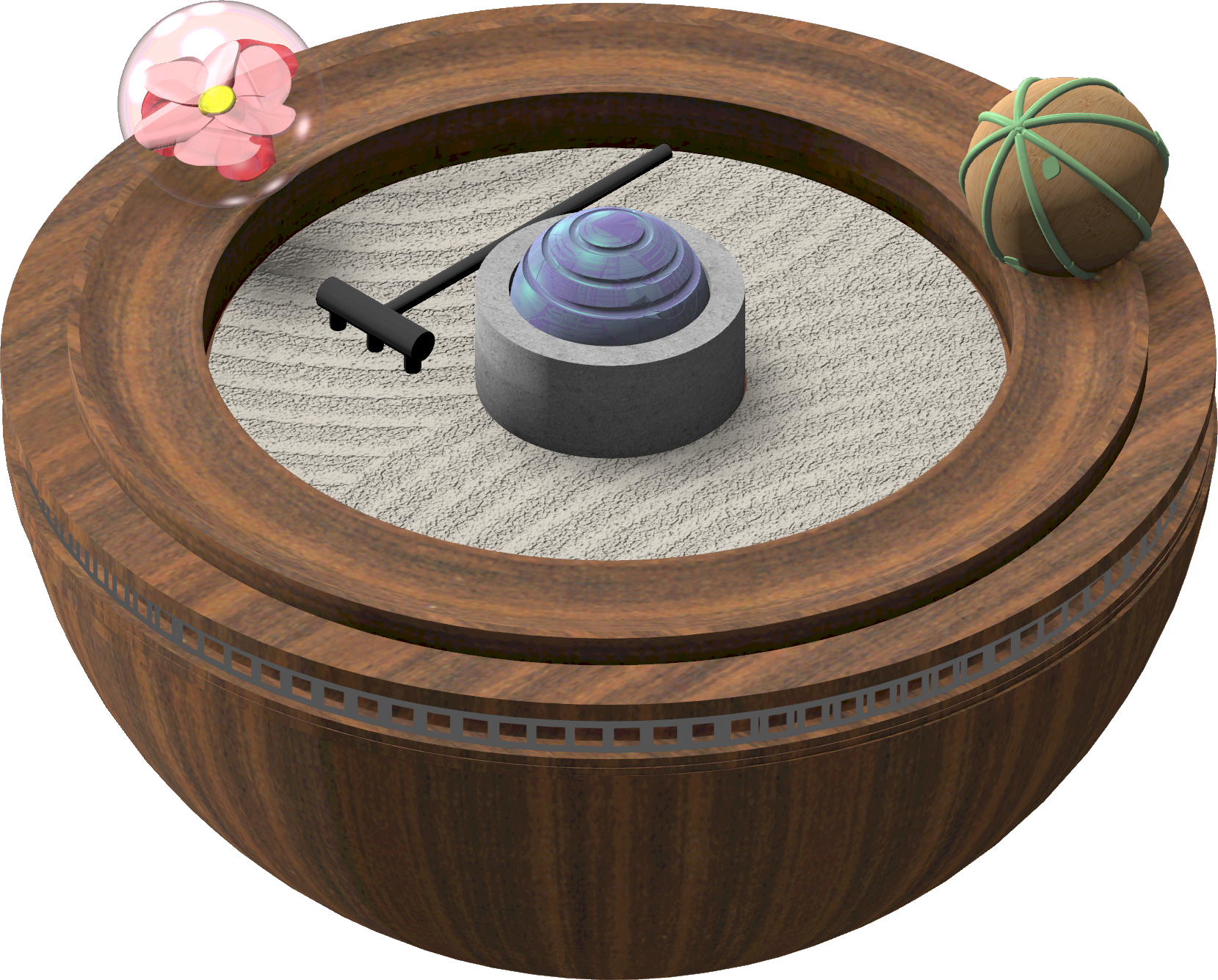

A smart diffuser that helps users disengage and relax through multi-sensory play.
ATMOS
Problem Space
By living in tiny spaces, more people are able to access the benefits, such as better job prospects, of densely populated cities that traditionally come with high costs of living by drastically reducing cost of rent. Tiny living is also attractive to those that desire a lifestyle that is untethered to a single location but still value the comfort of a home.
Less than 250 sq. ft per person.
What I did:
- User Researcher
- Ideation
- Rapid Prototyping
- Concept Illustration
- Evaluative Testing
- UI/UX Design
- Graphic Design
- Branding
My Team:
- Katherine Forrest
- Sirisha Billa
- Frank Shen
- Michael Rigney
- Daisy Hall
For:
- Integrated Product Development
University of Michigan Ann Arbor - January - May 2020
Research
Research Goal
To focus our research, we centered our initiatives around the following questions:
-
How do small living spaces affect residents' behavior and well-being.
-
What issues do residents of small living spaces face?
Key Findings
The absence of nature (light, greenery) and physical outdoor space makes residents of small spaces feel confined in their space Small living spaces hinder residents’ ability to organize and personalize their space, causing them to feel out of control. Living with others in small spaces jeopardizes private space as well as limits what alone time looks like.
Research Methodology
In the early stages of our research, we attended a design charrette where we were able to get a better understanding of the problem space by conducting 9 informal interviews and developing 3 user journey maps [top right]. To expand upon our learnings from the charrette, we read and analyzed 74 literary sources. Honing in on commonalities, we conducted 6 formal interviews with residents of small living spaces.
We also conducted a bodystorming session [bottom right] to better empathize and understand the experience of tiny living.
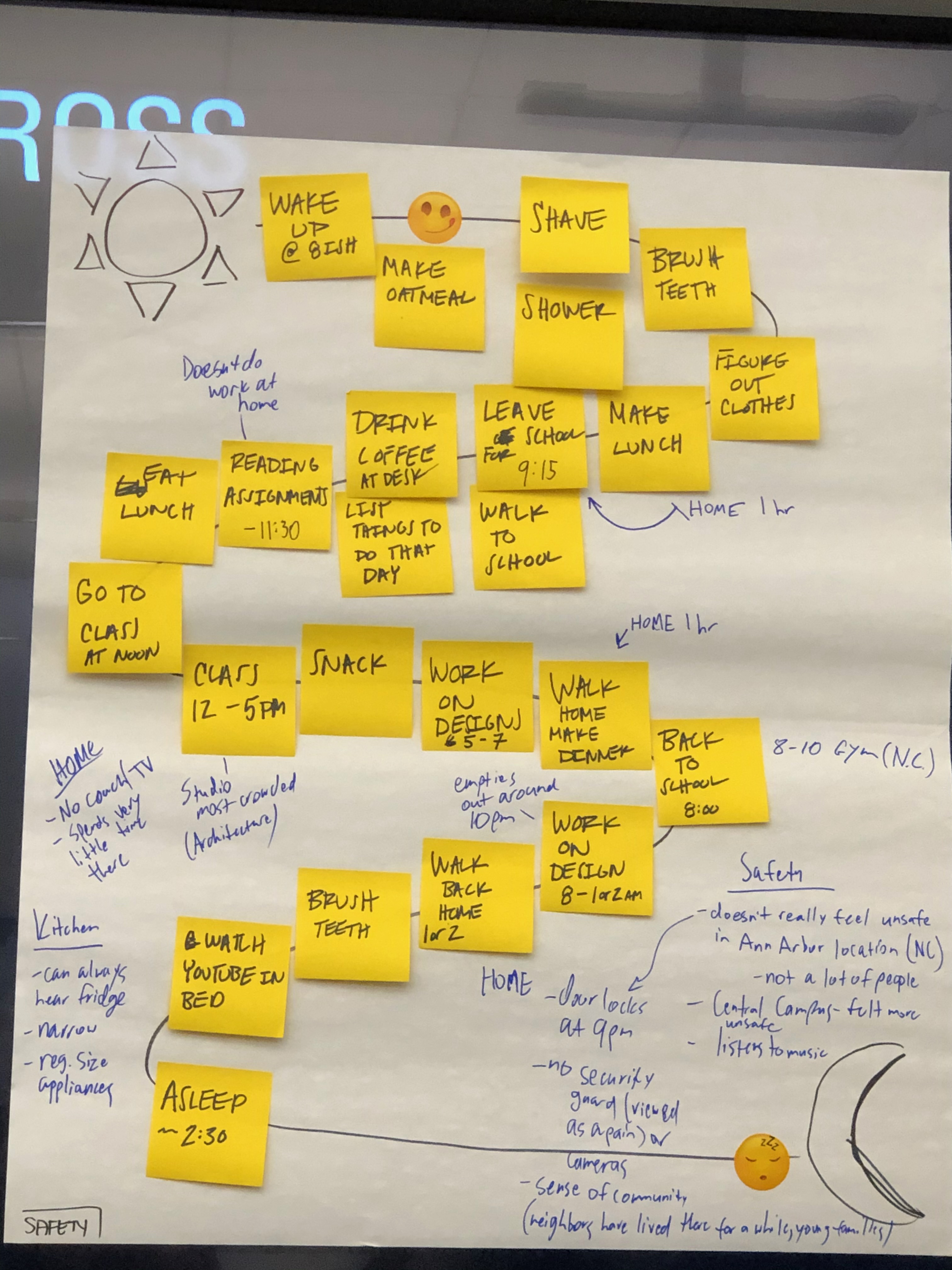
journey map
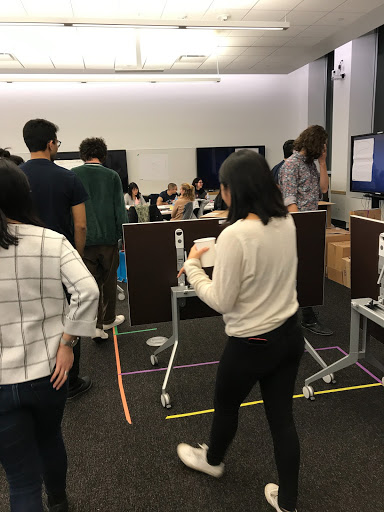
bodystorming
Synthesis
Affinity Diagramming
We synthesized our findings by creating an affinity diagram where we compiled the information gathered and sorted it into groups based on similarity, which allowed us to formulate key findings.

Personas
To humanize our targeted user and communicate their needs, frustrations, and behaviors, we created a persona for each key finding.

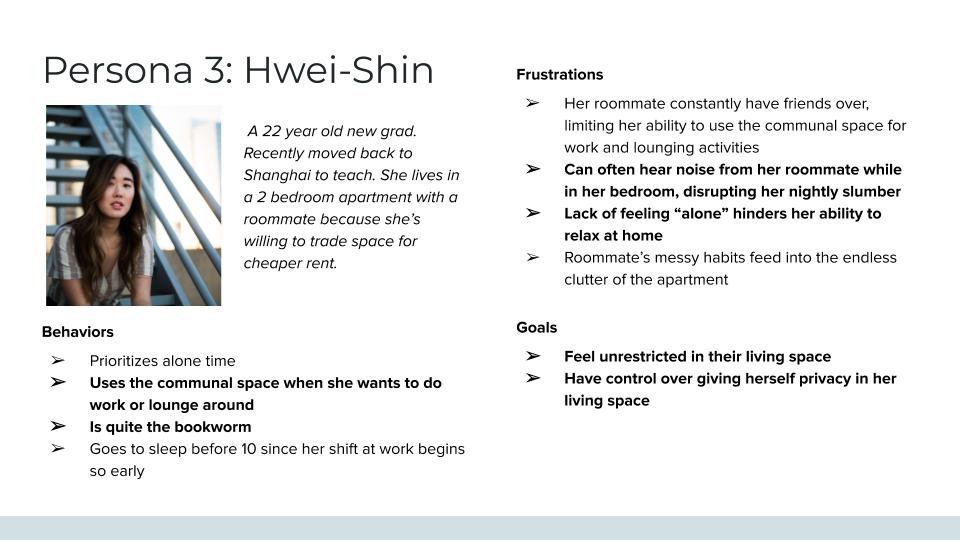
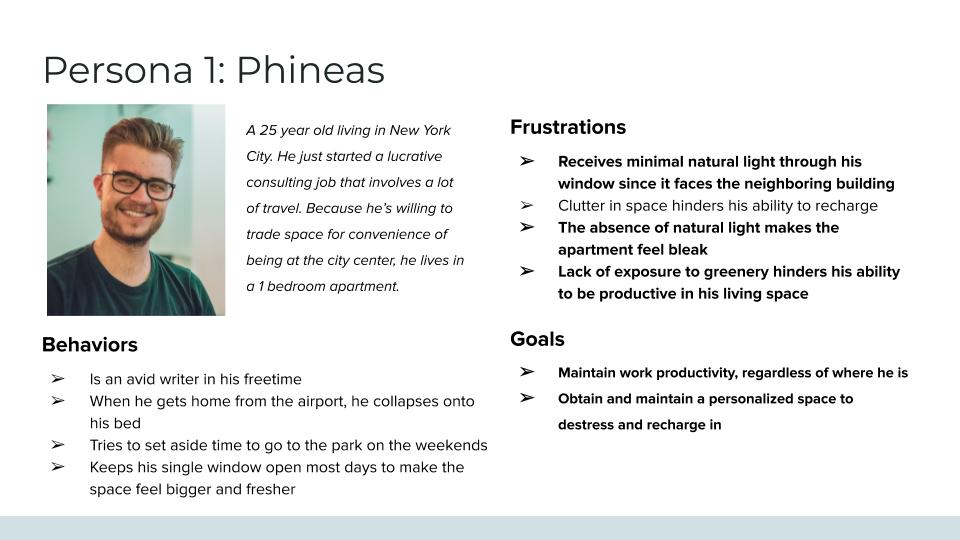
Ideation
Phase 1
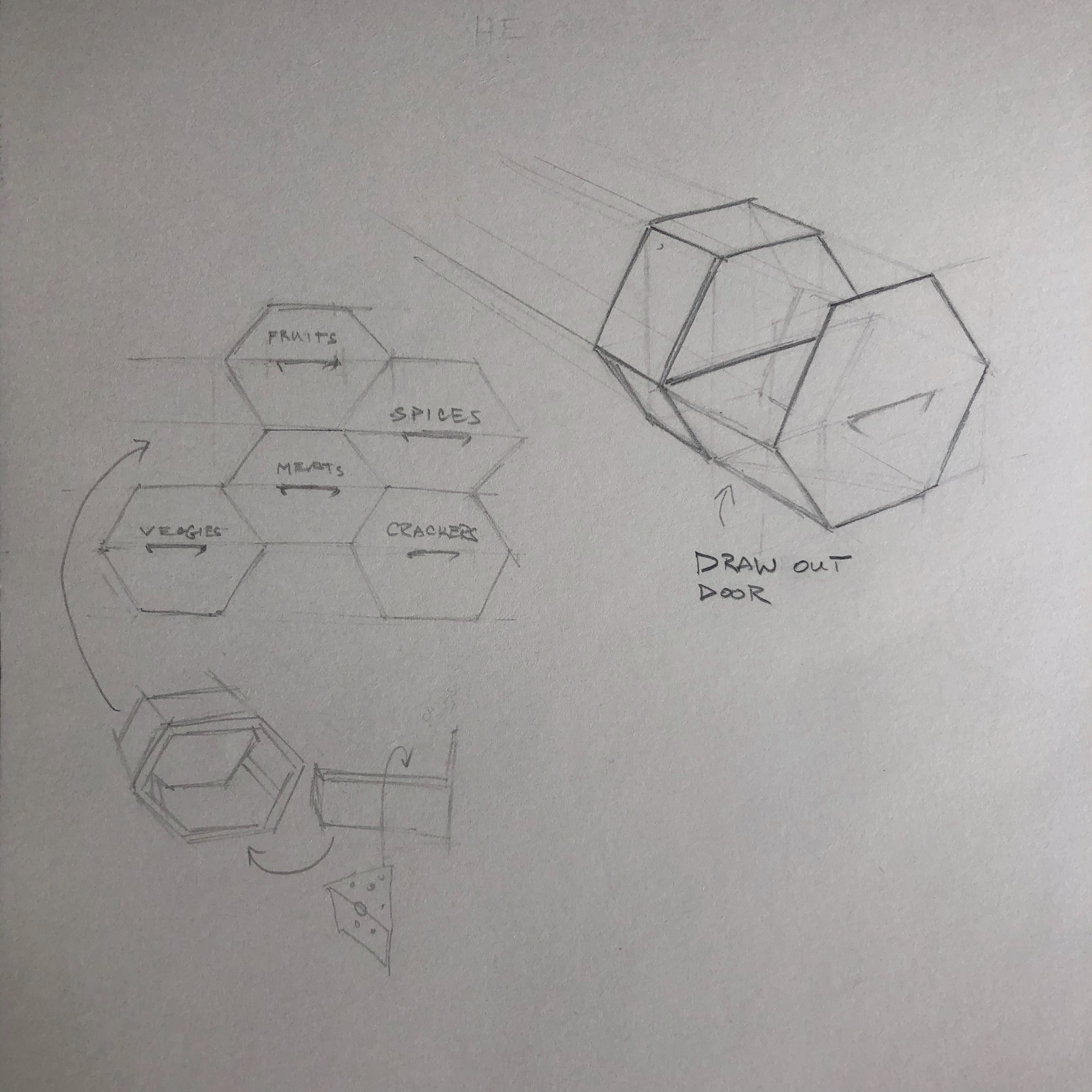
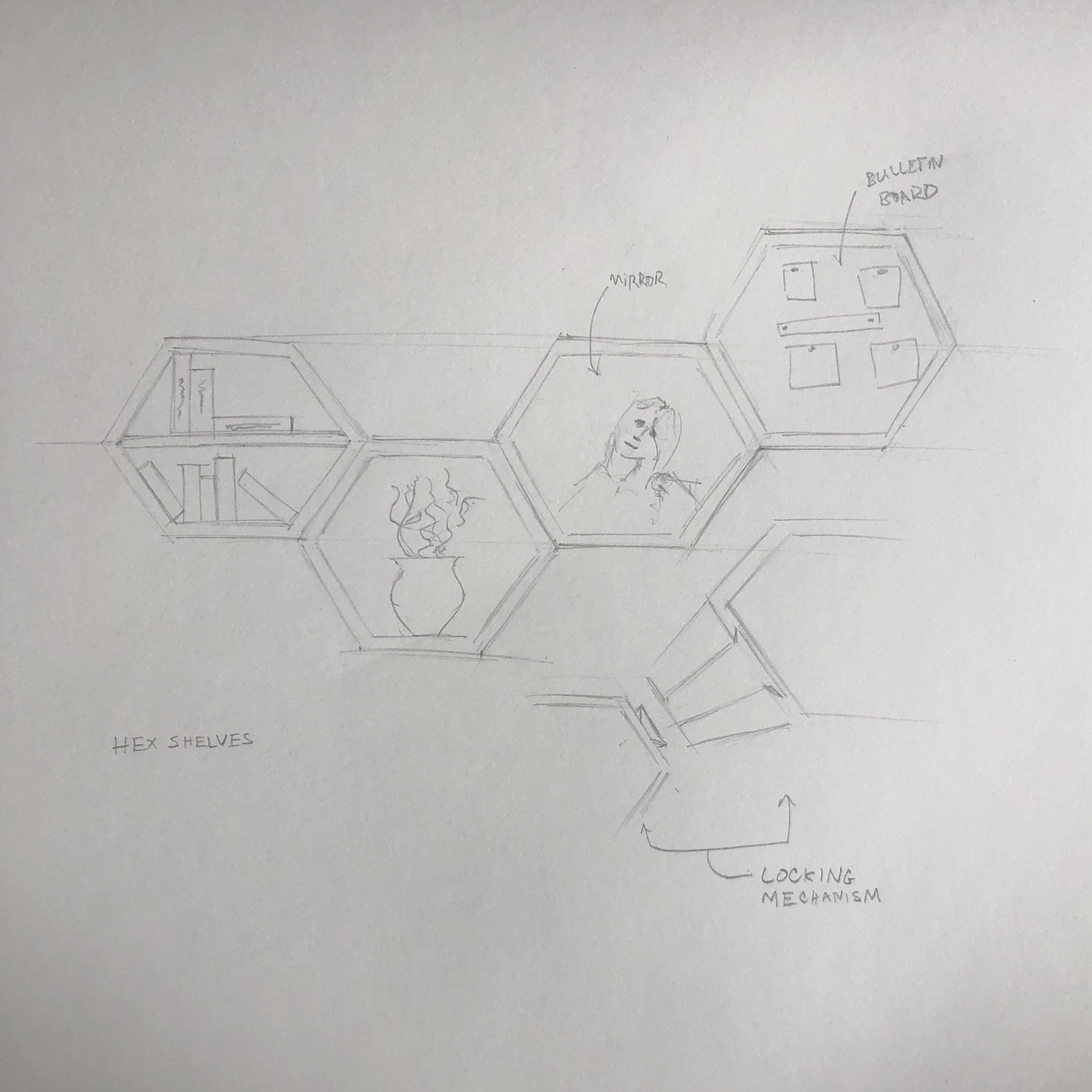
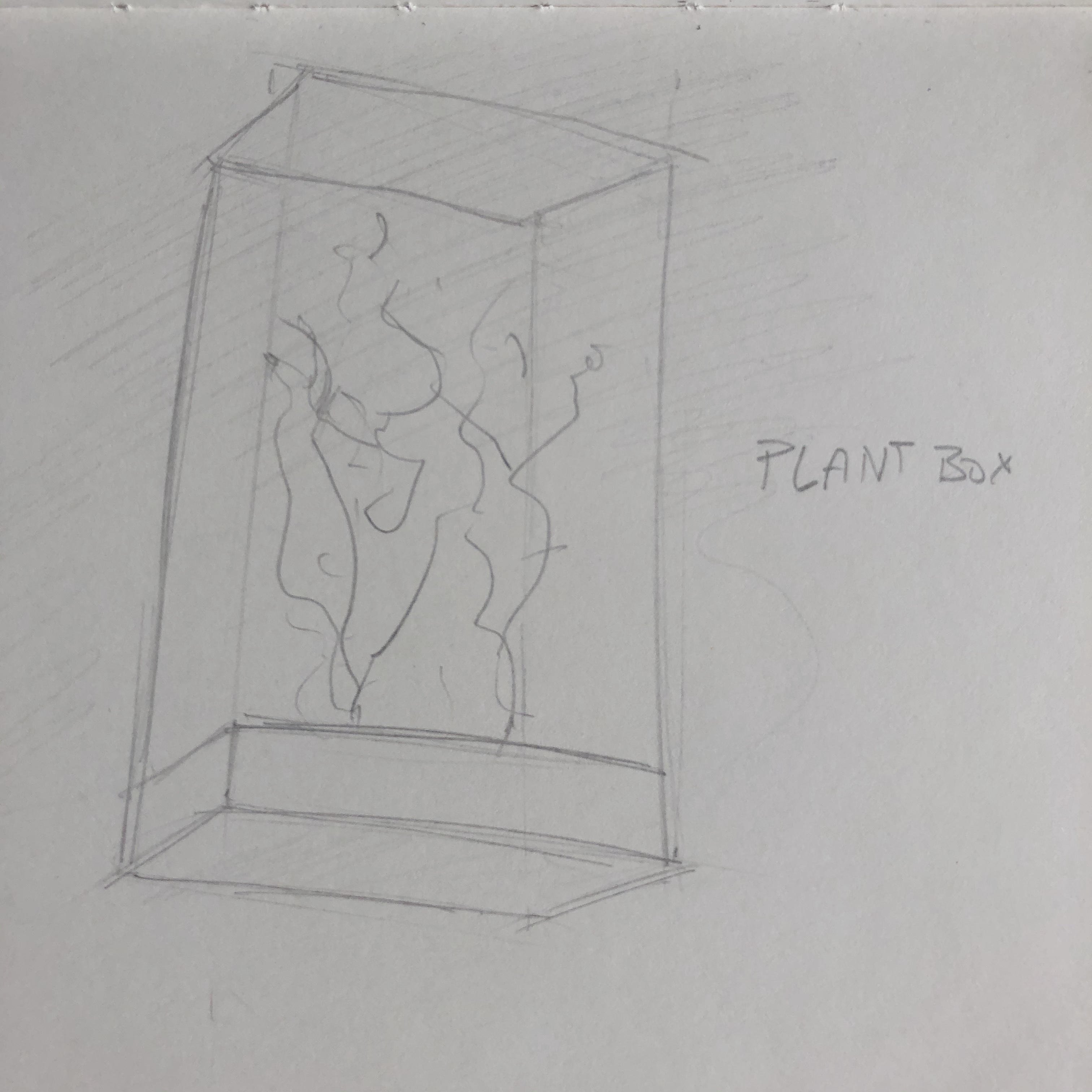
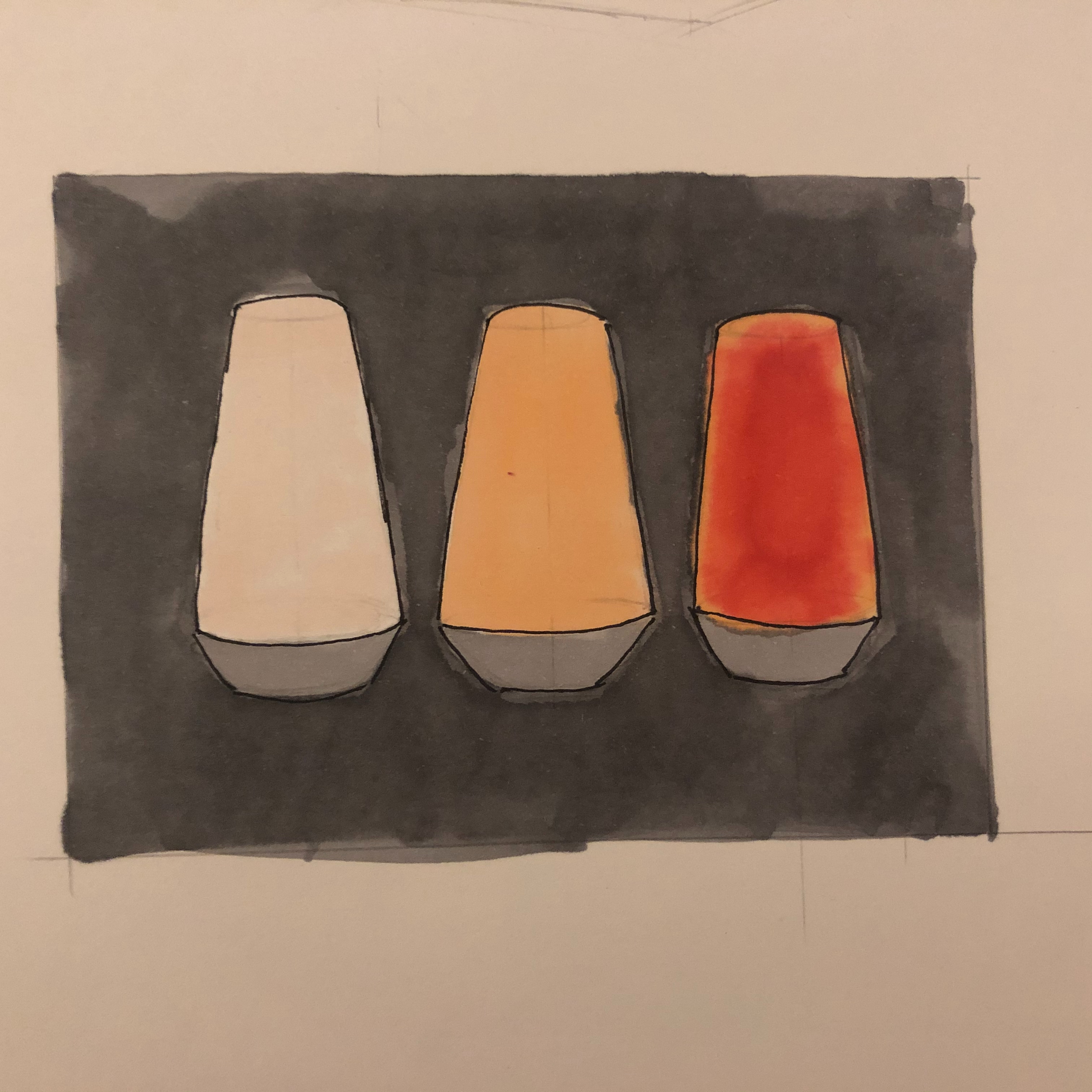
Based on our findings and personas, we brainstormed several hundred ideas and narrowed them to four concepts based on how strategic, desirable, viable, feasible, and interesting the concepts were.
Through feedback from a panel we narrowed our problem space to the lack of nature and light and the general sense of confinement.
Phase 2


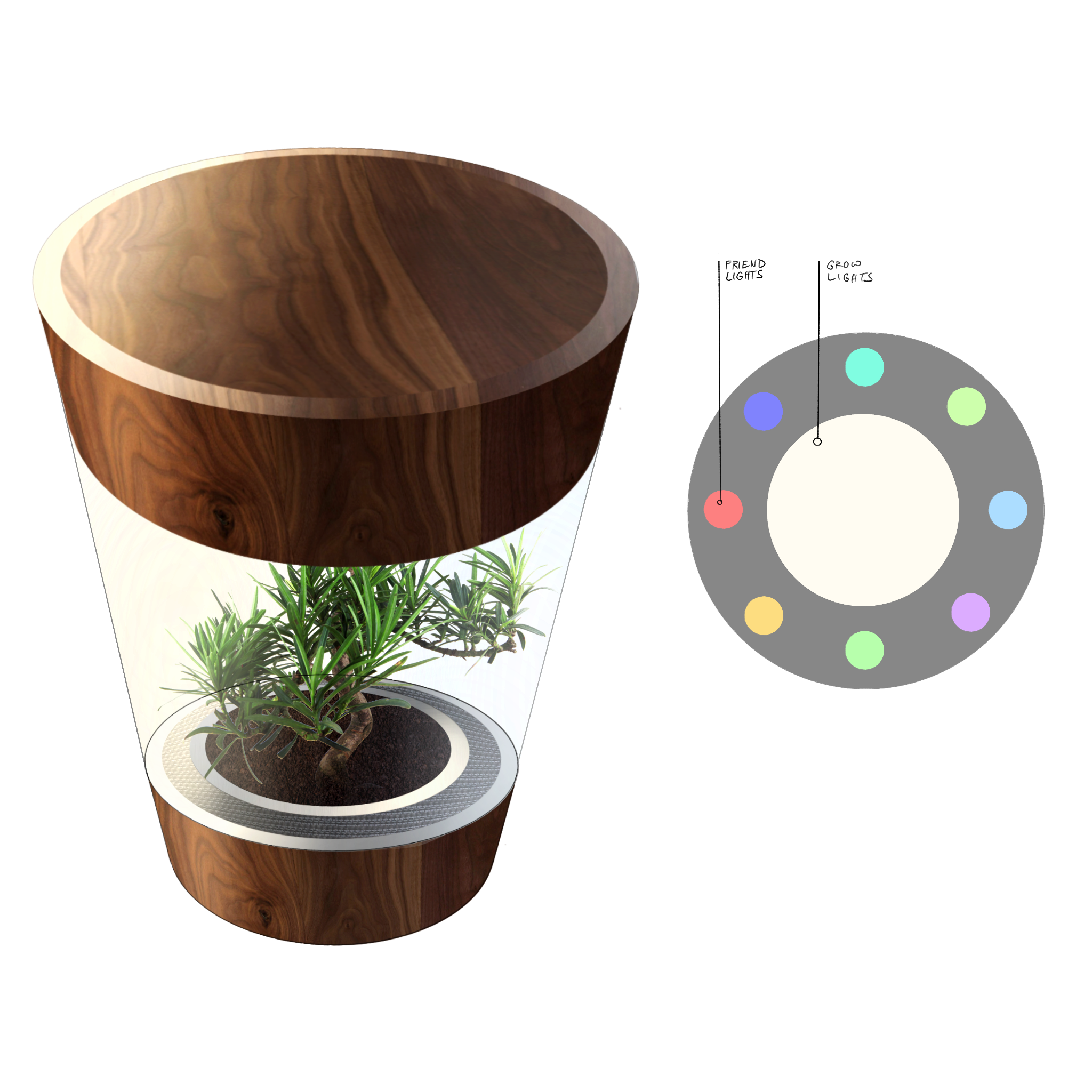
We then revisited our concepts, and chose 8 to move forward with. We created concept cards for each and a survey to gather user evaluation. In 51 responses, the highest rated concept was a smart diffuser–sound system.
Through further panelist feedback, we identified weaknesses and created a product brief to focus our ideation.
Phase 3
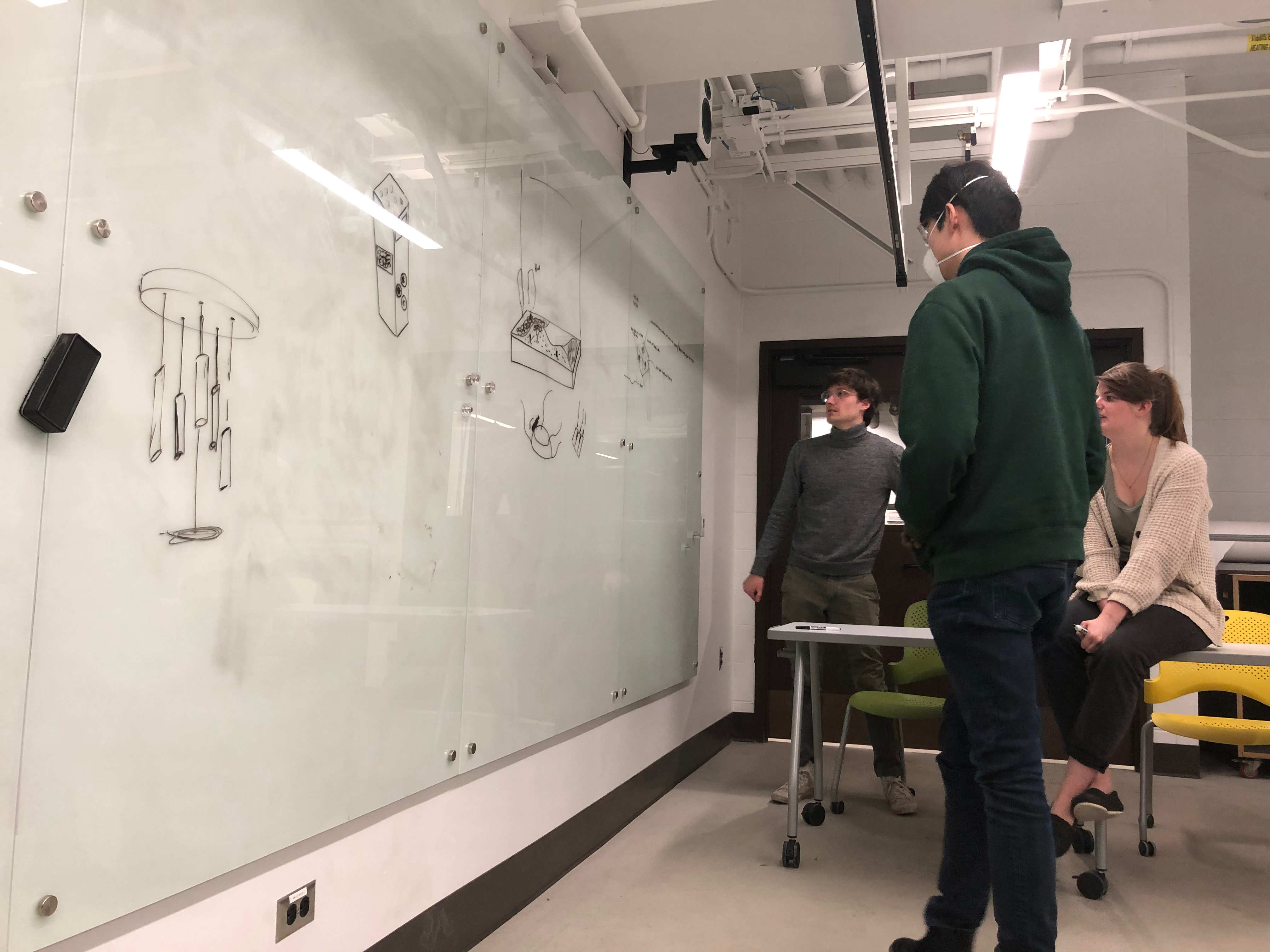
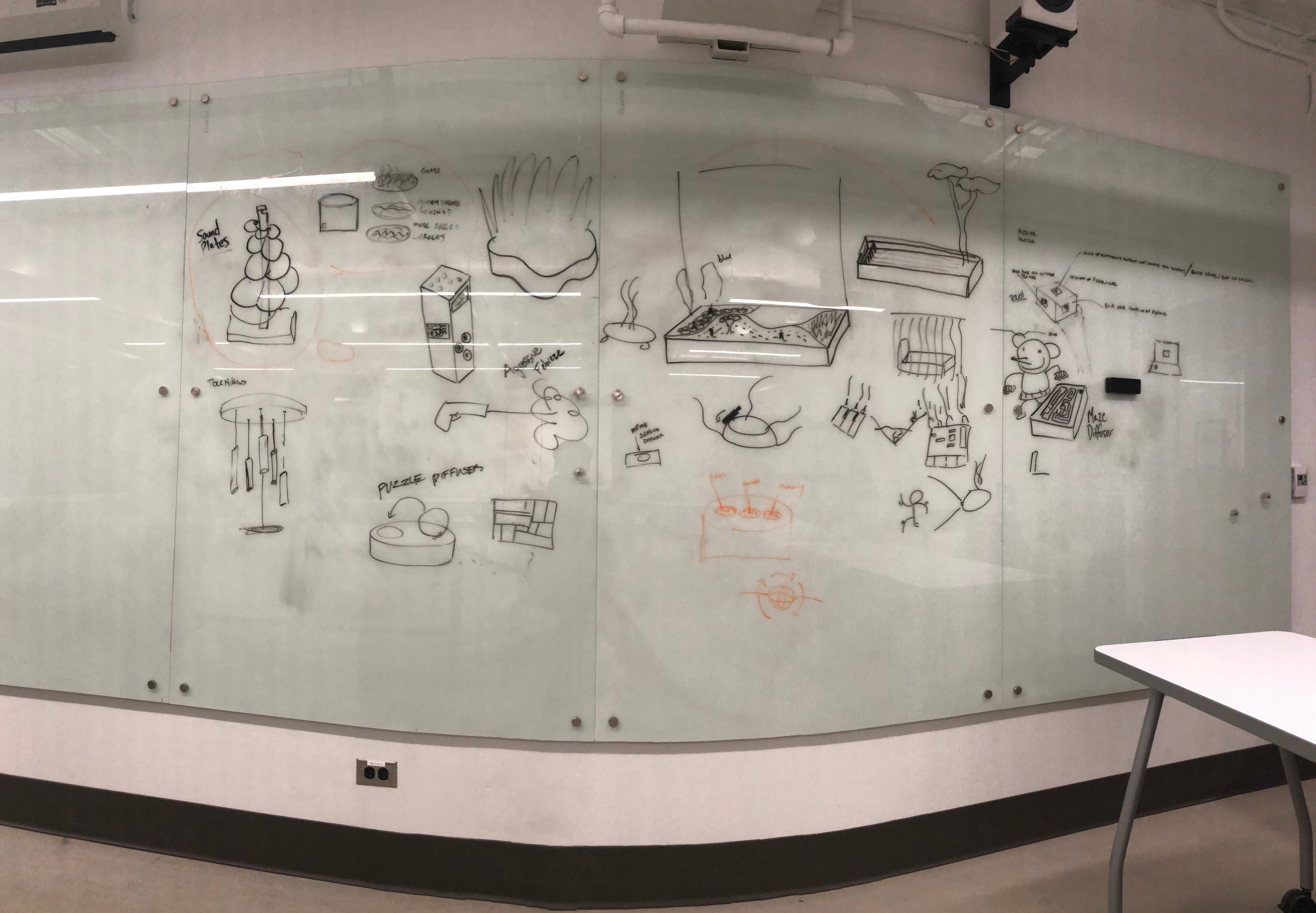
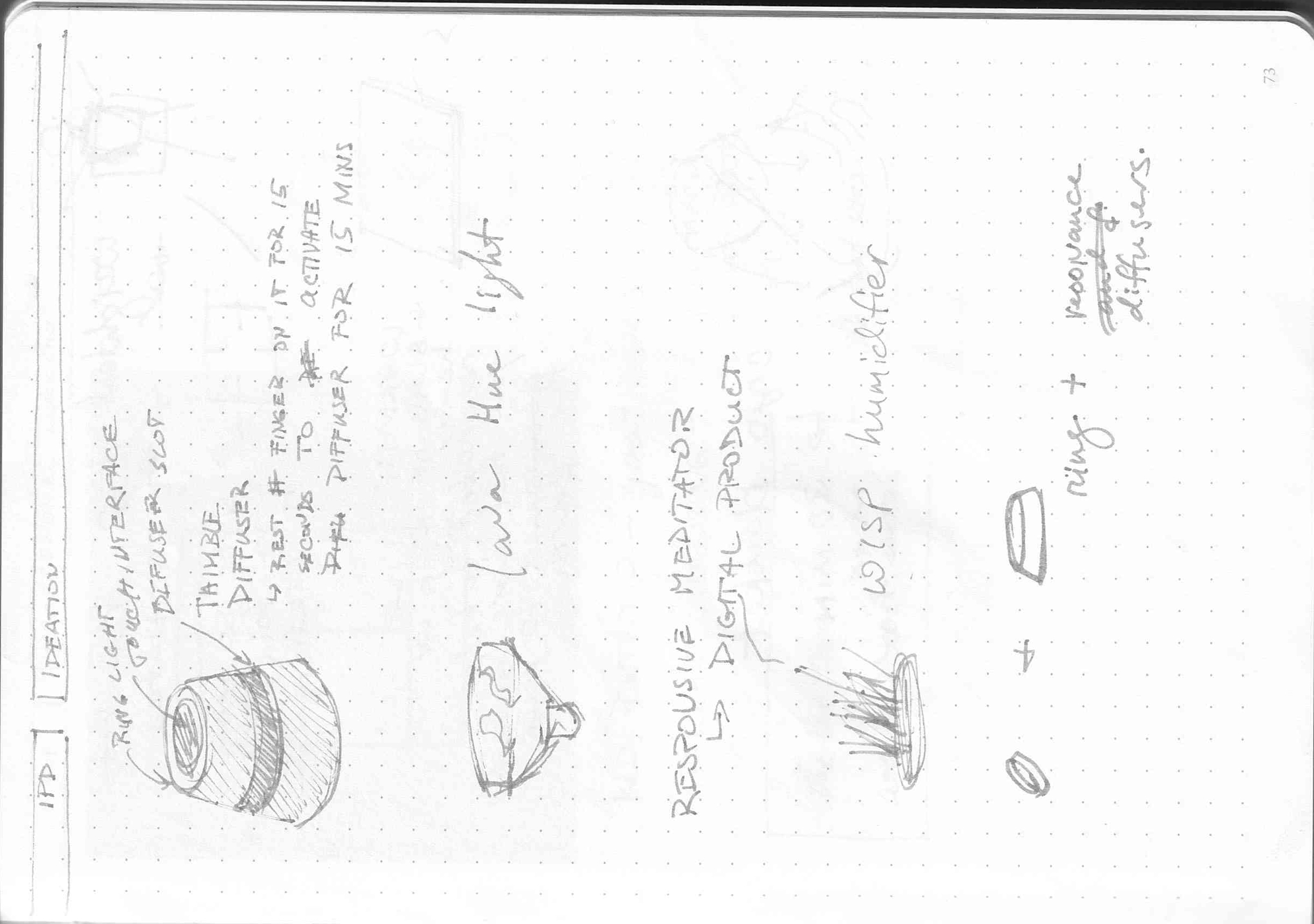
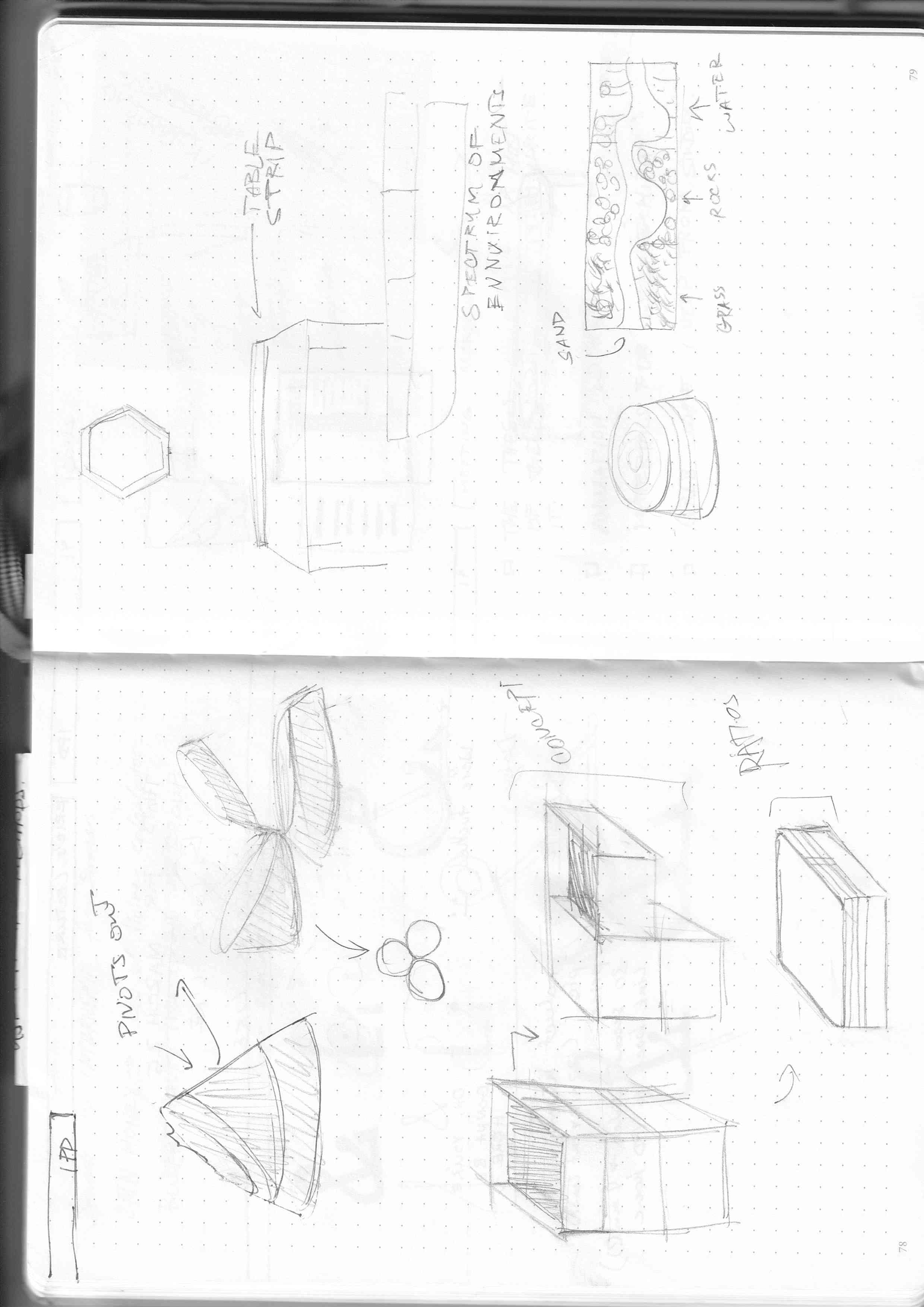
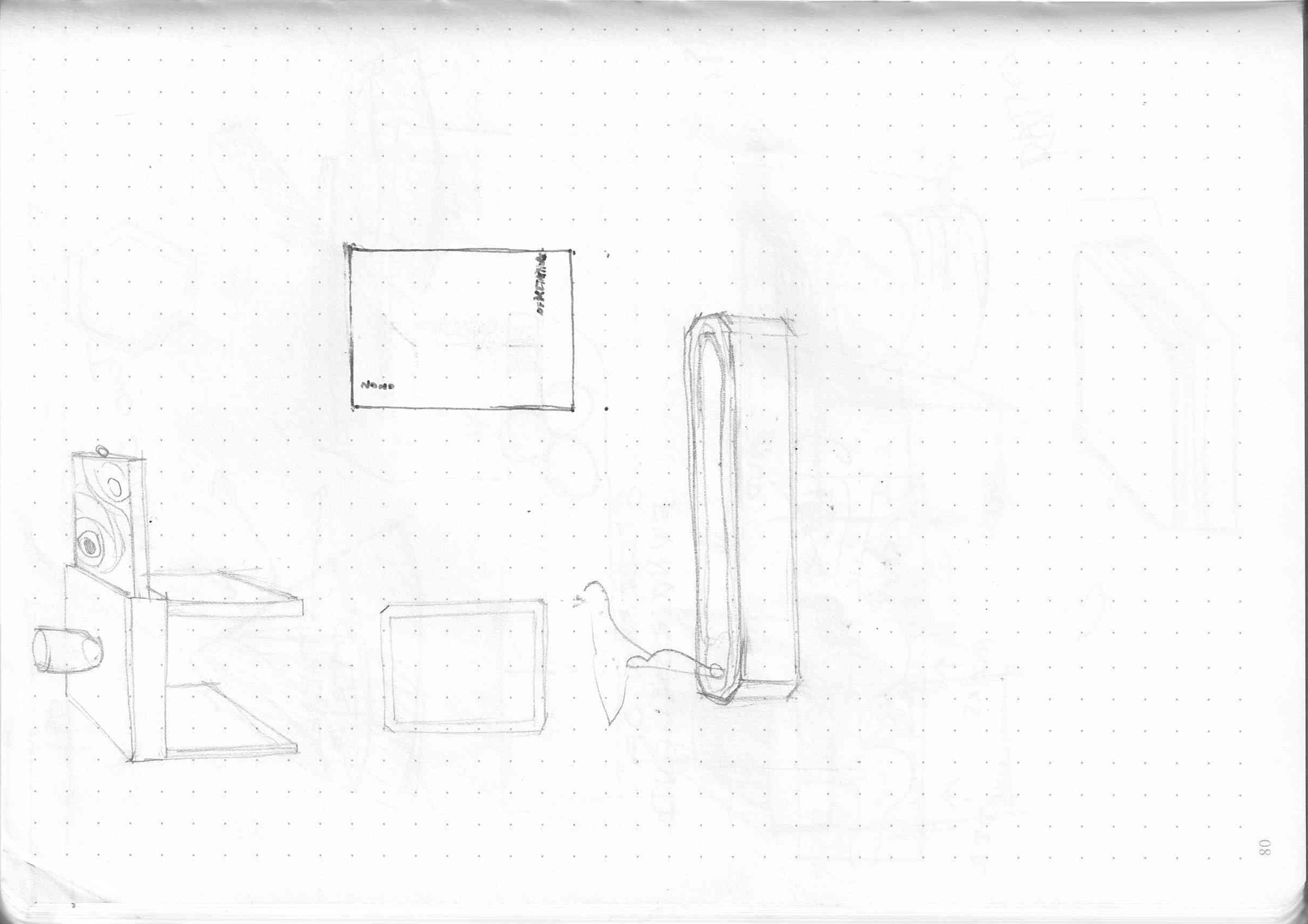
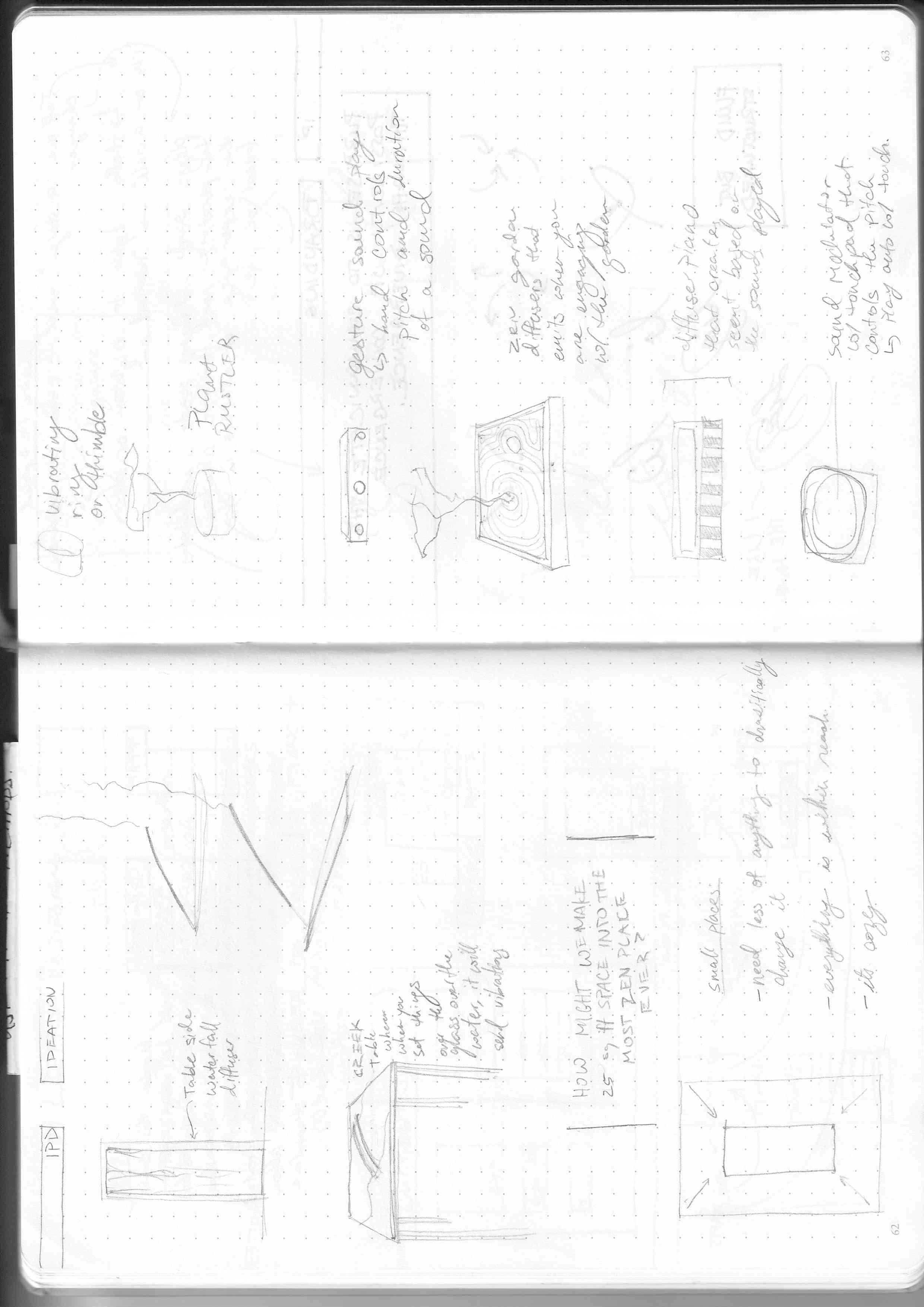
Product Brief - a device that would improve the ambiance of small living spaces by harnessing active engagement with nature (an aspect that was highly desired by the experts) through touch, smell, and sight to provide an immersive relaxation experience.
After several iterations centered around the product brief, we arrived at ATMOS.
Final Design
Living in tiny spaces often feels restrictive and confined leading to residents feeling more stressed when going home, which is compounded with the stress and anxiety of the high-pace environments often associated with tiny living.
ATMOS is a smart diffuser that softly diffuses selected scents of nature when the user plays with the shifting sands of zen garden.
ATMOS helps users de-stress by engaging the user with this play. The sand of the zen garden becomes visual and tactile feedback as the user plays—ebbing and flowing with the sands—which activates ATMOS: slowly diffusing scents designed to help bring the user into a relaxed head-space and envelop them in a sense of nature.
The length of user engagement with the zen garden, determines the length of diffusion of scent, which rewards users for engaging longer.


Activation
ATMOS uses motion sensors to detect when users engage with the zen garden, activating the diffuser.
Users are also able to set the diffusion duration by pressing the button above the light strip, for when users want the benefits of diffuser without needing to take the time to relax. Each press adds one hour to the duration, for a maximum of three hours.
The three lights indicate the duration of diffusion left–one for each hour.

Fragrances
Based on experiences in nature ATMOS’ wax melt fragrances are designed to softly bring users into the scenery. Each fragrance is accompanied by a corresponding orb, which can be played with or set into the center base to select indicate which scent the user wants to diffuse.
When fragrances are almost depleted, the indicator lights turn red. Users
can easily replace depleted fragrances by removing the top.

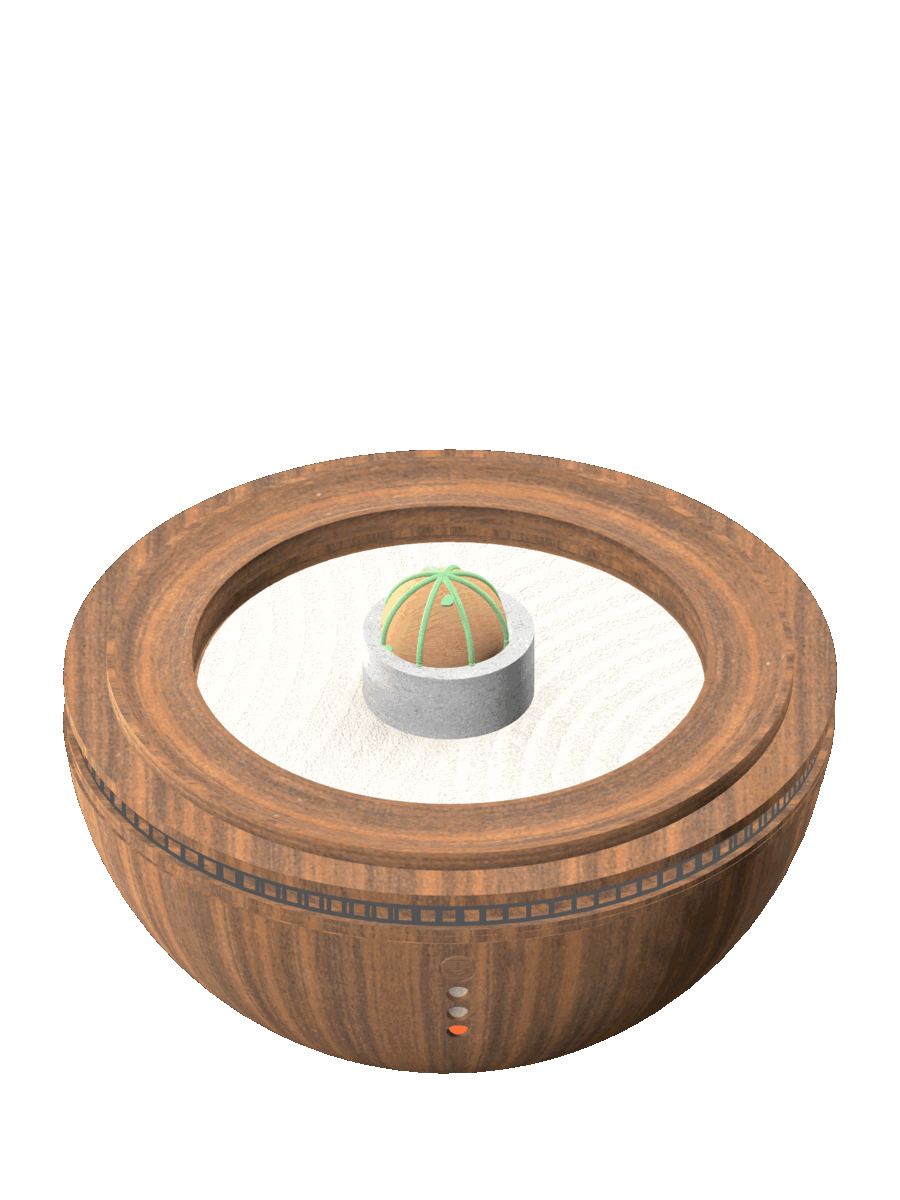
byes~ thank you!